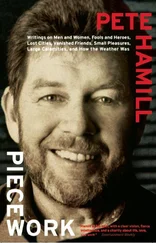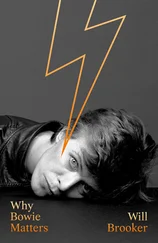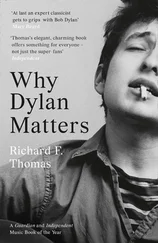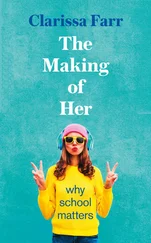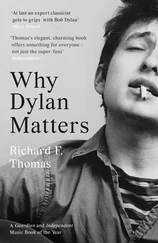In many ways he was a very lucky American. Timing is everything, in music and life. His career timing had been perfect. He was also lucky to have been declared 4-F. But his good fortune during the war hurt him when it was over. Absorbed with his expanding career, and perhaps fearful of his reception among the GIs, Sinatra didn’t make a USO tour until after the war in Europe ended on May 8, 1945. He was accompanied on the six-week tour by comedian Phil Silvers (with whom he had written “Nancy (with the Laughing Face)” as a birthday present for his daughter on her fourth birthday). On the long transatlantic journey to Europe, Sinatra was anxious. There had been predictions that the soldiers might be hostile, might throw eggs or tomatoes at the man who was making their girlfriends and sisters swoon while GIs were fighting the war. That didn’t happen. With shrewd advice from Silvers, Sinatra cast himself as a skinny underdog, an ordinary guy much like GI Joe. He made fun of himself and his image. He charmed the grizzled young veterans, expressed his gratitude to them, identified with them, and soon had them identifying with him. The press agents sighed in relief; so did Sinatra. Everything had gone smoothly. He’d even visited Italy and had met the Pope.
But when the veterans started coming home that fall, after the atom bombs ended the war with Japan, the smooth ride of Frank Sinatra started getting bumpier. The return of actors like Clark Gable and Jimmy Stewart reminded Americans that many show business figures had gone off to war. The ballplayers came home too, including Pee Wee Reese and Pete Reiser from the Brooklyn Dodgers, Hank Greenberg from the Detroit Tigers, Ted Williams from the Boston Red Sox, and, of course, the great DiMaggio. All were among the 9 million Americans who had served their country. More than half a million had been Italian Americans, thirteen of whom received the Congressional Medal of Honor while ten were awarded the Navy Cross. More than 300,000 Americans didn’t come home at all, including 13,712 from the state of New Jersey. And in every state in the Union, those who had been wounded and maimed tried to adjust to the changed country. Some have speculated about the effect military service might have had on Sinatra’s personality and career; that leads nowhere. For reasons that were honorable, he didn’t go to his generation’s war and had to settle for playing servicemen in eleven of his sixty movies. One thing is certain: for many of those who came back from World War II, the music of Frank Sinatra was no consolation for their losses. Some had lost friends. Some had lost wives and lovers. All had lost portions of their youth.
More important to the Sinatra career, the girls from the Paramount, and all their sisters around the country, started marrying the men who came home. Bobby socks vanished from many closets. The girls who once wore them had no need anymore for imaginary lovers; they had husbands. Nothing is more embarrassing to grownups than the passions of adolescence, and for many, Frank Sinatra was the teenage passion. Children were soon being born in unprecedented numbers, all those kids who a generation later would be known as the baby boomers. At the same time, the children of all those turn-of-the-century immigrants, now toughened by war, equipped with the benefits of the GI Bill, began leaving city ghettos for the expanding new suburbs; some became the first people in the histories of their families to go to universities.
Swing music was rapidly dying, for complicated reasons. Most important was a two-year strike by the American Federation of Musicians, which, among other things, forced Sinatra to make his first sides for Columbia Records singing a cappella with a choral group. The strike kept the big bands out of the studios, unable to reach the mass audience with new material. Goodman, Dorsey, and others sounded stale; Glenn Miller was dead, having disappeared over the English Channel. The economics of the bands also changed. Postwar inflation drove up the cost of transportation. Sidemen who gladly worked for $40 a week during the Depression were now asking for $200, with soloists demanding more. Musically, the big band sound was exhausted. From Fifty-second Street to Minton’s Playhouse in Harlem, the hippest fans were now listening to bebop, to Charlie Parker and Dizzy Gillespie, Fats Navarro, Max Roach, and others — all of them playing in small groups that were formed during the musicians’ strike. Jazz had become a freer, more democratic form of chamber music, an ongoing jam session liberated from the dictates of rigid big band arrangements. Younger fans, with only vague memories of the Depression, were listening to mush or to novelty tunes. For many other people, the music of the swing bands reminded them of the war, a time they wanted to forget. It would be a long time before nostalgia would work its magic, transforming that music into a symbol of a more innocent America.
Musically, Sinatra reacted to the postwar climate in several ways. Even before leaving for his USO tour, he had experimented with other sounds, recording four sides with a black gospel-style group called the Charioteers and two others in a rumba rhythm with the orchestra of Xavier Cugat. He conducted an instrumental album of Alec Wilder songs. He wrote the lyrics to an aching ballad called “This Love of Mine.” But basically, he stayed with variations on his own traditional taste in ballads and jump tunes, most of them arranged by Stordahl. Many were very well done, enriched by strings and woodwinds, but the mysterious currents of public taste were shifting. The fans were groping for something new, sounds that would express the exuberance, optimism, and, in certain ways, mindlessness of the years after the war. Some would find it in singers as varied as Billy Eckstine, Frankie Laine, and Guy Mitchell. Perry Como had a string of hits. Doris Day became a star, along with Peggy Lee, Vaughn Monroe, Vic Damone, and the Four Aces. Even Gene Autry had a hit in 1949 with “Rudolph the Red Nosed Reindeer.” There were no signs of panic in Frank Sinatra, but he must have been uneasy.
He put much of his energy into the movies. In 1945 he won a special Academy Award for a ten-minute short called The House I Live In . He played himself, leaving a radio studio and running into some kids who are beating up another “because we don’t like his religion.” Sinatra tries to straighten them out and sings the title song. At the time, Sinatra’s liberal politics were widely known. Most performers of that era kept their politics to themselves; let Democrats in the audience believe they were Democrats, Republicans think they were Republicans. But Sinatra was a new breed in Hollywood. He publicly supported Franklin D. Roosevelt and visited him in the White House. This was more than familial loyalty to his mother, Dolly; Sinatra was one of the first big stars to use his fame to promote his politics, and those politics were, by all accounts, deeply felt. He made an effort to visit schools and talk to teenagers about bigotry, always citing the hurtful words that had been hurled at him as a boy in Hoboken. He signed petitions. He sent money to candidates. The short, directed by Mervyn LeRoy from a script by Albert Maltz (later to become one of the Hollywood Ten during the anticommunist crusade), impressed the critics.
“Mr. Sinatra takes his popularity seriously,” said the reviewer for Cue . “More, he attempts to do something constructive with it. Millions, young and old, who will not or cannot read between the lines of their daily newspapers and are blind to the weed-like growth of bigotry and intolerance planted by hate-ridden fanatics, will listen carefully to what Mr. Sinatra has to say in this short film.”
He followed the short with Anchors Aweigh (1945), a bright, good-natured musical about sailors on shore leave. Sinatra was superb. He worked with Gene Kelly — worked very hard indeed, and his dance number with Kelly shows it; the routine is full of high spirits, self-kidding, and good dancing. “I never worked so goddamned hard in my life,” he said later, laughing in a fond way. “Kelly was a brute.” But those were the days of the major studios; at MGM, where Sinatra had a five-year contract, he often couldn’t choose his vehicles. The films that followed were mediocre ( It Happened in Brooklyn, RKO’s The Miracle of the Bells ), and one, The Kissing Bandit (1948), was dreadful. Set in the nineteenth century, this semimusical stars Sinatra as a young Mexican fresh out of an Eastern college who goes back to Old California to run the family rancho. He even sings one song while riding a white horse. Sinatra’s love interest is Kathryn Grayson, and the movie also features J. Carrol Naish, the Irish actor from Life with Luigi , who plays Sinatra’s Mexican foreman, Chico. “I hated reading the script,” Sinatra later said, “hated doing it, and, most of all, hated seeing it. So did everyone else.”
Читать дальше



